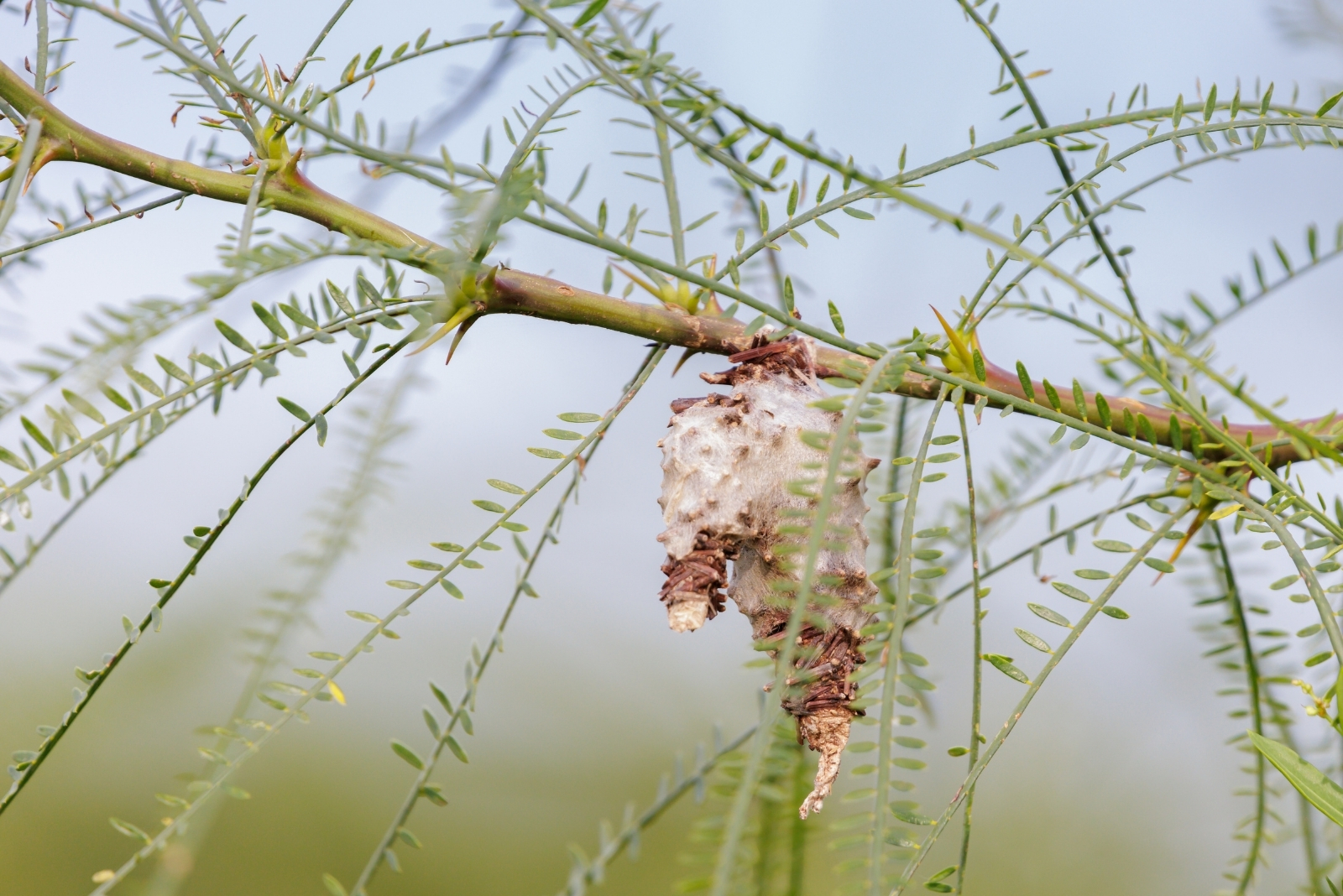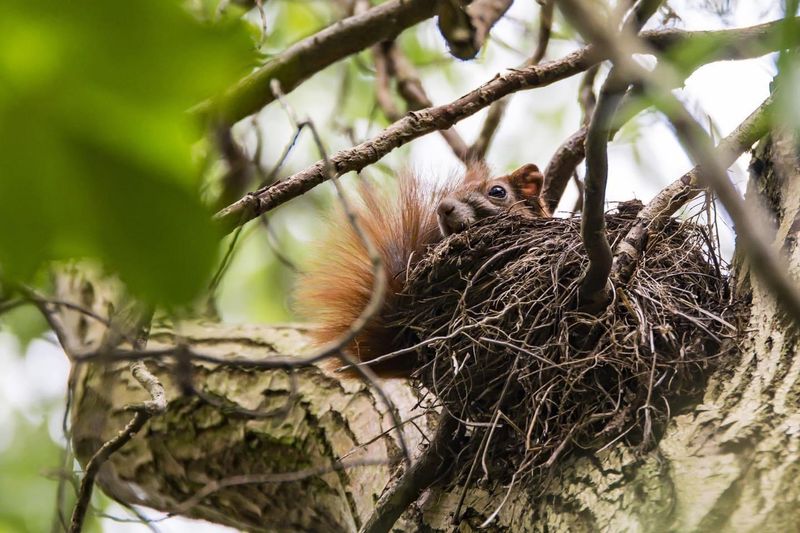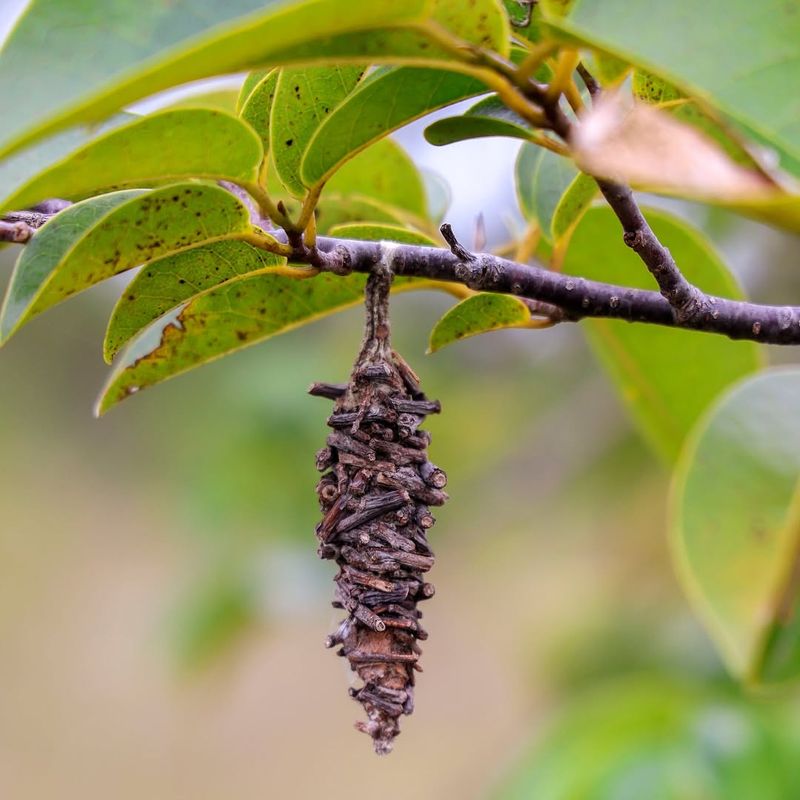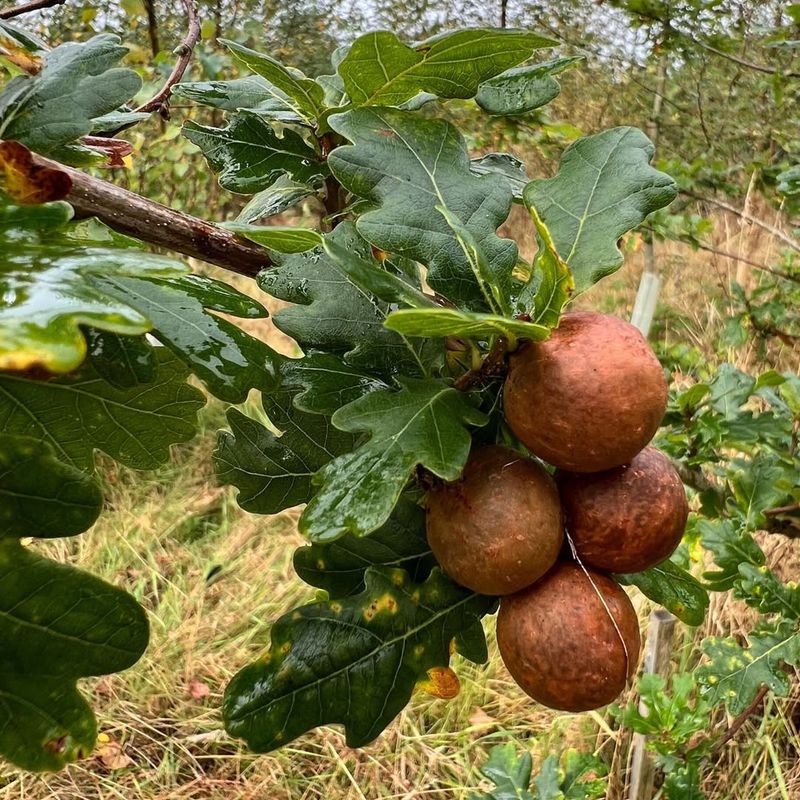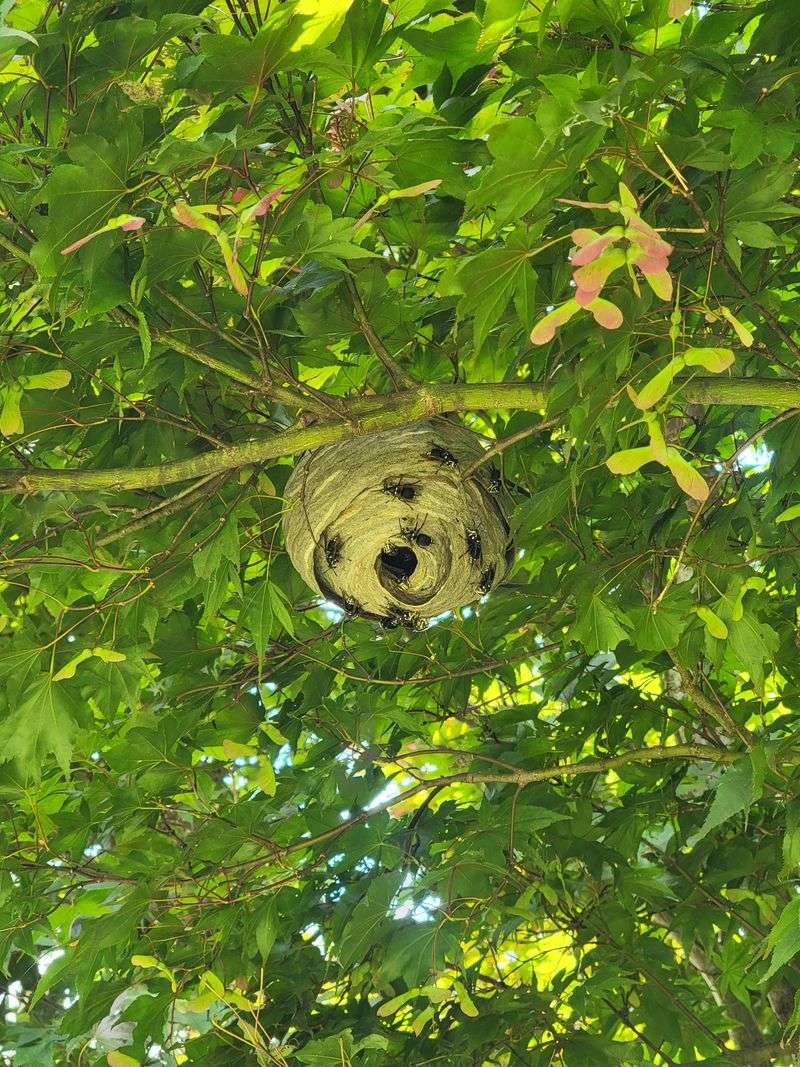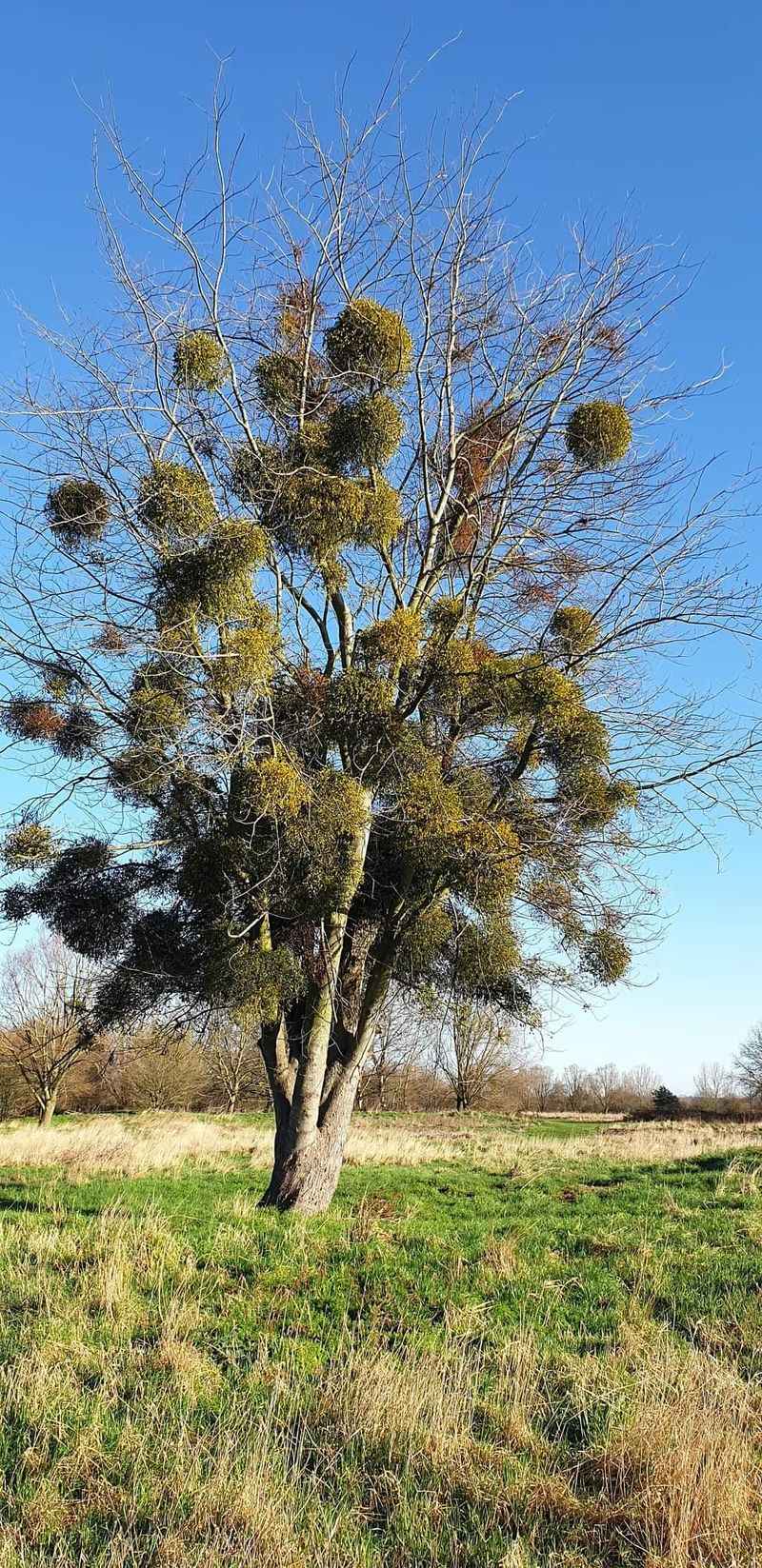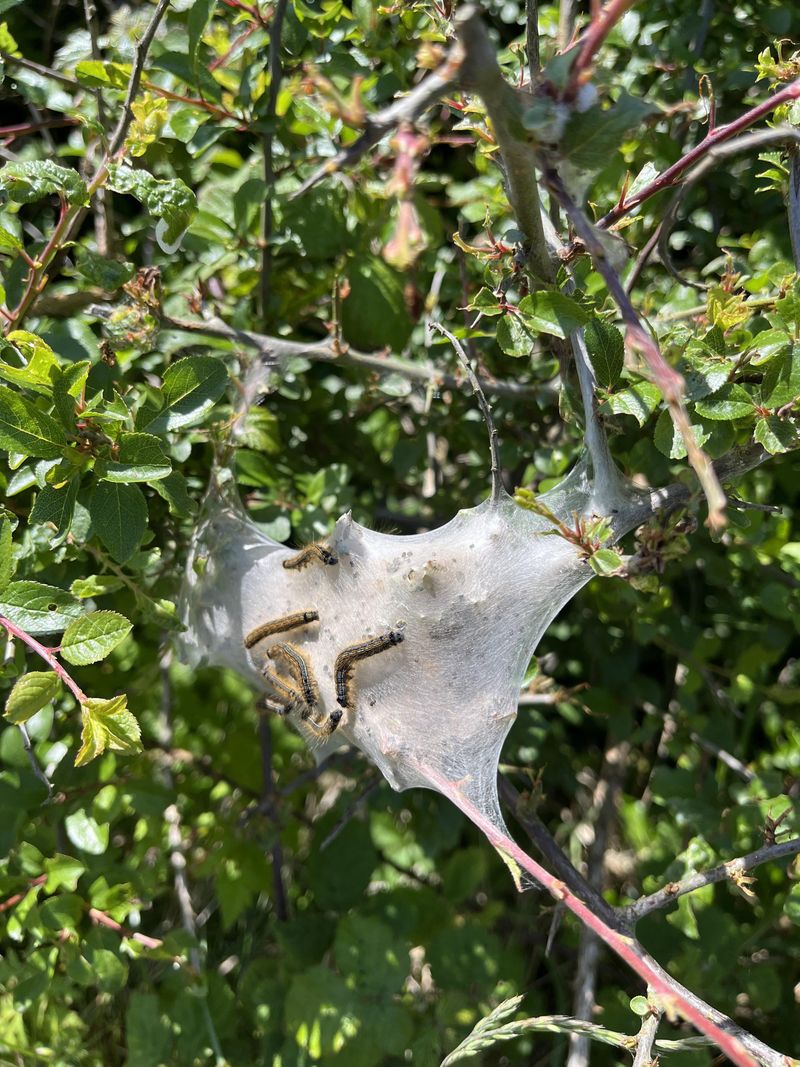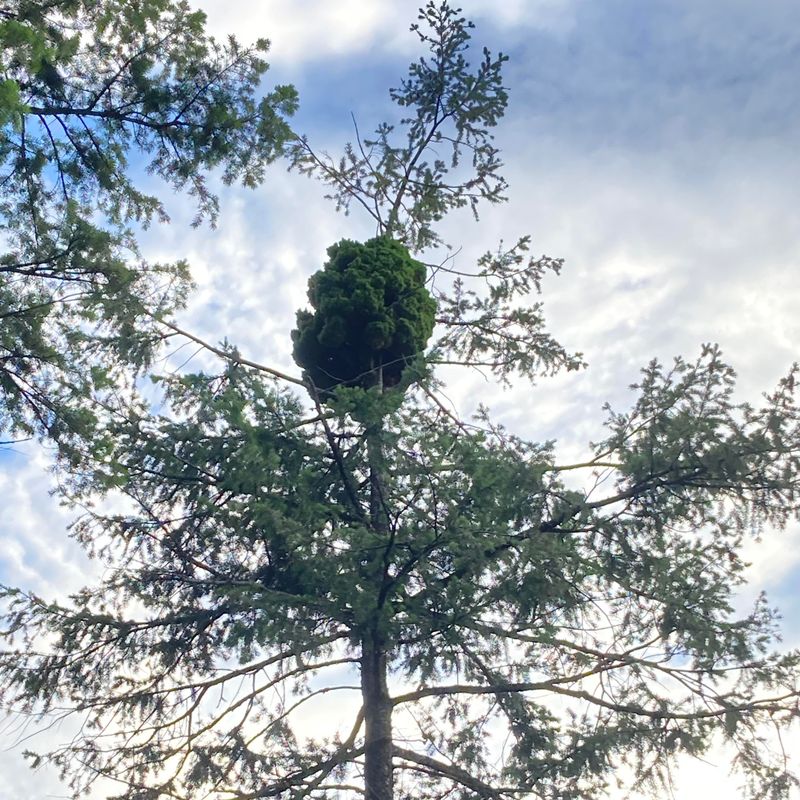If you’ve spotted mysterious leaf bundles hanging in Missouri trees, you’re not alone. They might look like bird nests, but something entirely different is at play.
These strange clusters have their own fascinating story in the fall landscape. Here’s what’s really behind those leaf balls popping up across Missouri.
1. Eastern Gray Squirrel Dreys
Squirrels build these leafy homes called dreys high up in Missouri trees, especially during fall and winter. Unlike bird nests made with mud and grass, dreys are constructed from leaves, twigs, and bark strips woven together.
Each drey has a hollow center where squirrels sleep, raise babies, and escape harsh weather. You’ll often see multiple dreys in one area since squirrels create backup homes.
Missouri’s abundant oak and hickory trees provide perfect building spots and food sources nearby for these busy creatures.
2. Bagworm Moth Cocoons
Ever noticed small cone-shaped bags dangling from trees? Bagworms create these protective cases using silk and bits of leaves or needles from their host plant.
Throughout Missouri, these caterpillars munch on evergreens and deciduous trees while dragging their homemade bags everywhere. Inside each case, the caterpillar eventually transforms into a moth.
Female moths never leave their bags, while males emerge to fly and mate. These destructive pests can seriously damage trees if left unchecked in Missouri gardens.
3. Oak Apple Galls
Tiny wasps lay eggs inside oak tree tissue, triggering the tree to grow these round, apple-like balls. Missouri’s many oak species commonly develop these galls throughout spring and summer months.
Inside each gall, wasp larvae feed and grow safely protected from predators. The tree essentially creates a nursery room without suffering major damage.
Once the wasps mature and leave, the dried galls remain attached, often confusing people who mistake them for strange fruit or nests in Missouri woodlands.
4. Bald-Faced Hornet Nests
These impressive gray paper nests can grow as large as basketballs hanging from Missouri tree branches. Bald-faced hornets chew wood fibers and mix them with saliva to create their papery homes.
Multiple layers protect hundreds of hornets inside, with the queen at the center. Construction happens throughout summer, with the nest abandoned come winter.
Missouri residents should admire these architectural wonders from a safe distance since disturbing them triggers aggressive defensive behavior from the colony residents.
5. Mistletoe Clumps
Mistletoe grows as a parasite on Missouri trees, forming distinctive green balls visible especially during winter when leaves fall. Birds spread mistletoe seeds after eating the berries, depositing them on branches.
The plant sends roots into the host tree, stealing water and nutrients for survival. While romantic at Christmas, mistletoe can weaken trees over time.
Missouri’s hardwood forests often display these evergreen clumps year-round, creating unusual rounded shapes that stand out against bare winter branches throughout the state.
6. Tent Caterpillar Silk Nests
Spring brings silky white webs to Missouri tree forks as tent caterpillars build communal shelters. Hundreds of caterpillars live together inside these protective tents, leaving daily to feed on leaves.
Eastern tent caterpillars prefer cherry, apple, and crabapple trees found throughout Missouri yards and orchards. Their webs expand as the colony grows larger.
While alarming in appearance, these caterpillars rarely kill healthy trees, though they can cause significant defoliation during major outbreaks across Missouri regions.
7. Witches’ Broom Disease Clusters
Fungal infections, viruses, or mites cause trees to grow dense clusters of twigs called witches’ brooms. Missouri trees affected by this condition produce abnormal growth patterns that resemble tangled leaf balls from afar.
Branches multiply excessively in one spot, creating a broom-like appearance that persists year-round. Hackberry trees commonly display this condition throughout Missouri landscapes.
While strange-looking, witches’ brooms typically don’t kill trees but do create permanent odd formations that puzzle observers unfamiliar with this peculiar plant disease.

